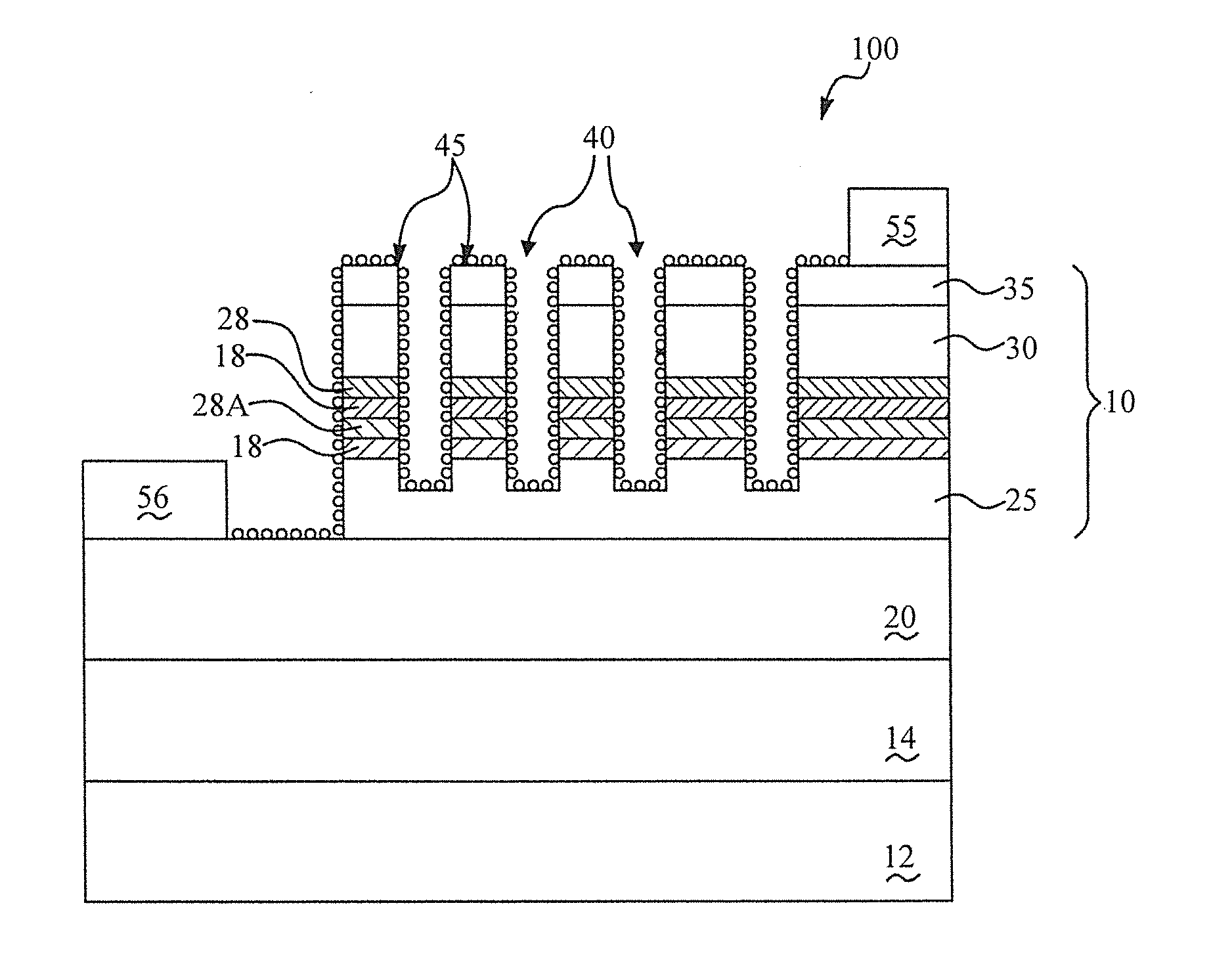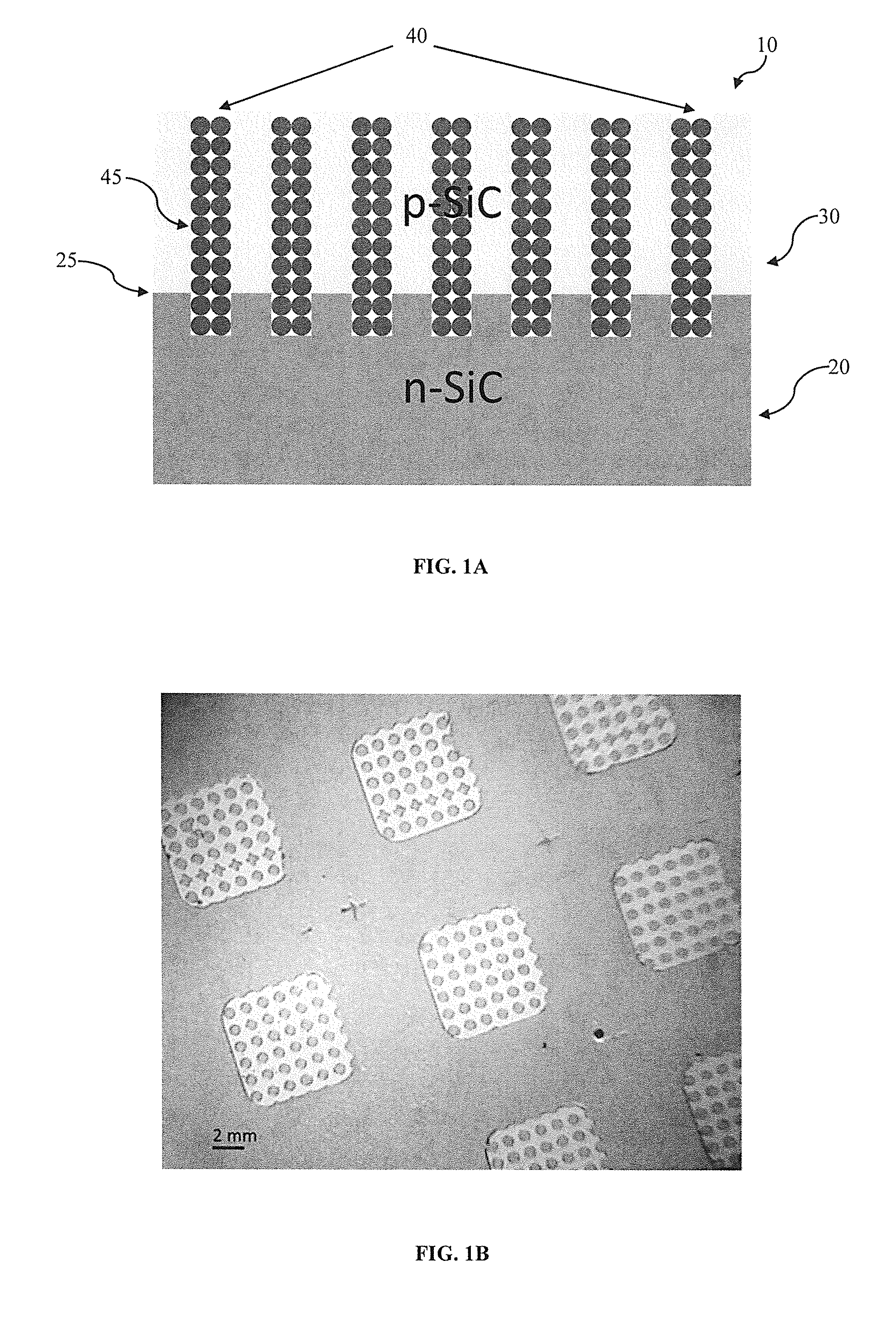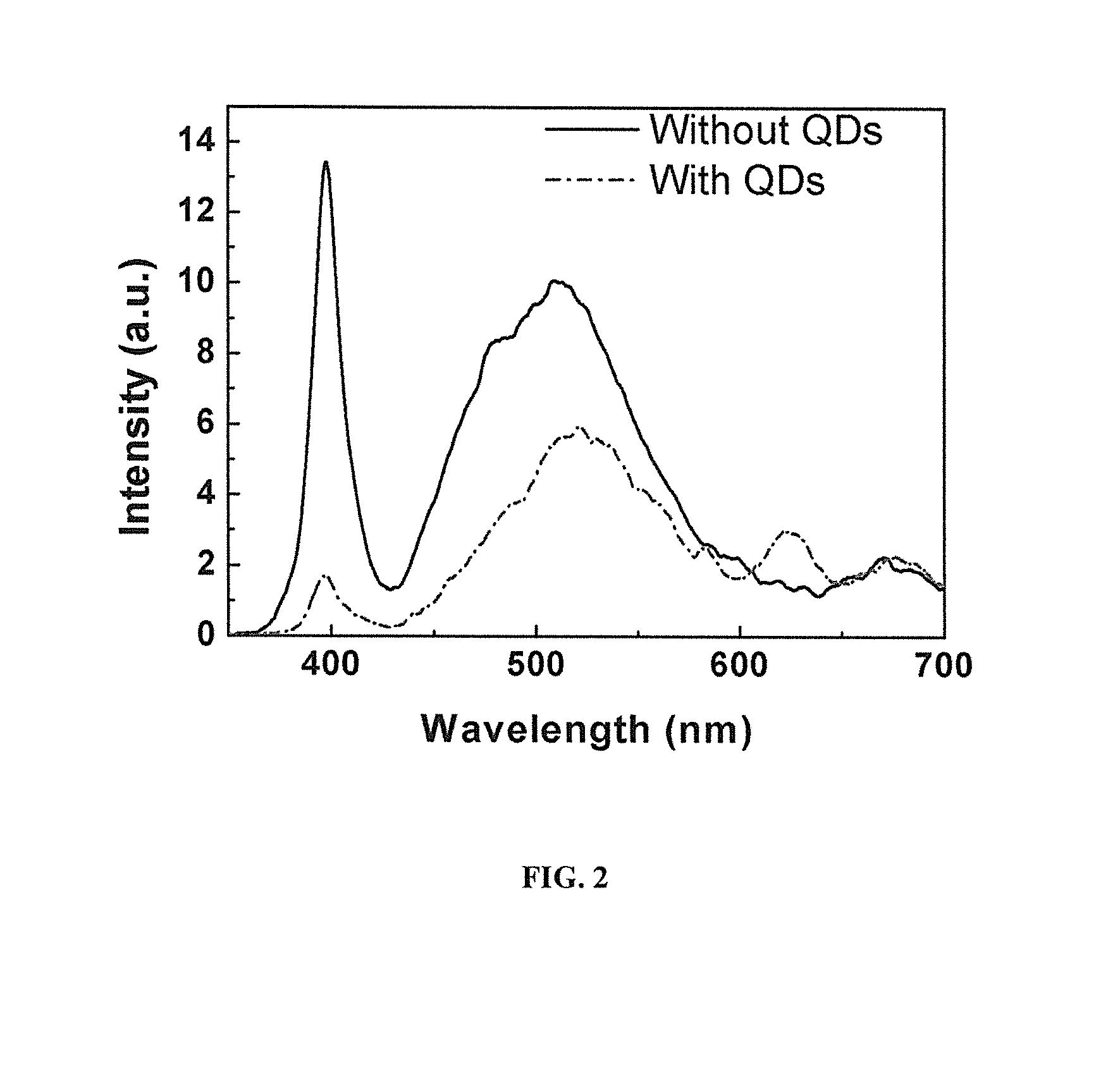Light emitting diodes with quantum dot phosphors
- Summary
- Abstract
- Description
- Claims
- Application Information
AI Technical Summary
Benefits of technology
Problems solved by technology
Method used
Image
Examples
example 1
Fabrication of Silicon Carbide Quantum Dot Phosphor LED's
[0037]A silicon carbide (SiC) p-n junction was fabricated and surface-patterned with arrays of holes, facilitating sidewall-coupling between the QDs and the SiC p-n junction. Nonradiative energy transfer was observed from the SiC diode to colloidal QD-phosphors that accumulated in the holes. Enhanced red emission of QDs was measured from characterization of the electroluminescence spectra of the diode, with a color conversion quantum efficiency calculated to be 3.1%. Time resolved photoluminescence (TRPL) was also performed, and the photoluminescence (PL) decay lifetime of the SiC junction was found to decrease from 24.1 ns to 21.7 ns following the QD deposition, further confirming the existence of the nonradiative energy transfer path between the QDs and the SiC diode.
[0038]A SiC diode is fabricated with arrays of holes that are infiltrated with QD phosphors. The QD phosphors are colloidal CdSe / ZnS core / shell QDs (QSP-620, Oc...
example 2
Characterization of Silicon Carbide Quantum Dot Phosphor LED's
[0041]For device characterization, electrical pumping is implemented by forward-biasing the SiC p-n junction with a Keithley 2612B semiconductor parameter analyzer. The electroluminescent emission of the diode is characterized with an integrating sphere-measurement for full collection of the non-Lambertian radiation pattern. The diode is placed inside the integrating sphere (Thorlabs MA189), where the output emission of the diode is diffusely reflected by the barium sulfate-coated inner surface of the sphere and redistributed isotropically into all solid angles; the spectral and intensity detection of the light exiting from a small aperture at the sphere surface facilitates an accurate determination of the total number of photons from the nano-structured emitter. The output of the integrating sphere is coupled, via an optical fiber, to a spectrometer (Spectropro, ˜0.1 nm spectral-resolution) equipped with a p-i-n photodet...
PUM
 Login to View More
Login to View More Abstract
Description
Claims
Application Information
 Login to View More
Login to View More - R&D
- Intellectual Property
- Life Sciences
- Materials
- Tech Scout
- Unparalleled Data Quality
- Higher Quality Content
- 60% Fewer Hallucinations
Browse by: Latest US Patents, China's latest patents, Technical Efficacy Thesaurus, Application Domain, Technology Topic, Popular Technical Reports.
© 2025 PatSnap. All rights reserved.Legal|Privacy policy|Modern Slavery Act Transparency Statement|Sitemap|About US| Contact US: help@patsnap.com



